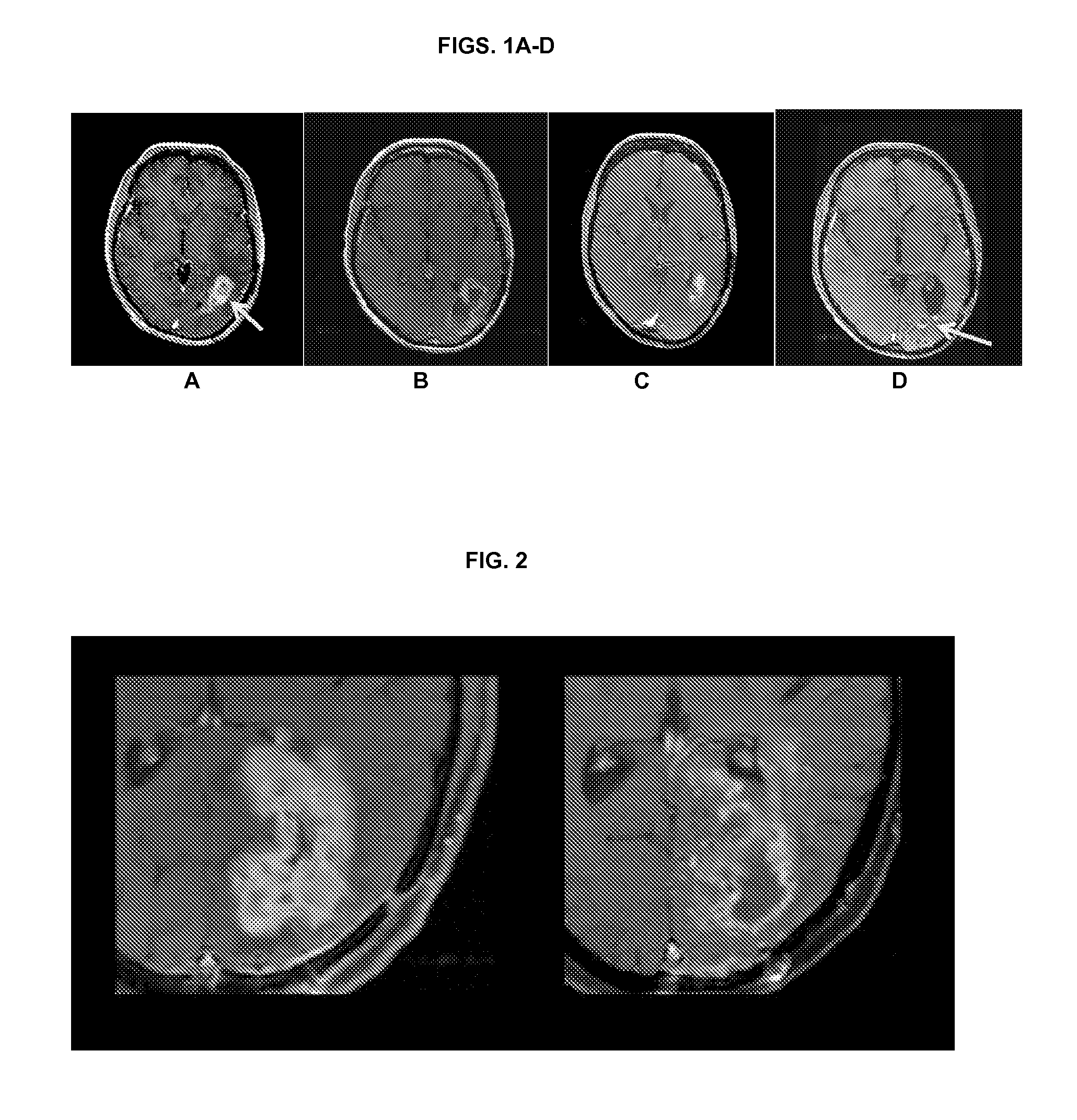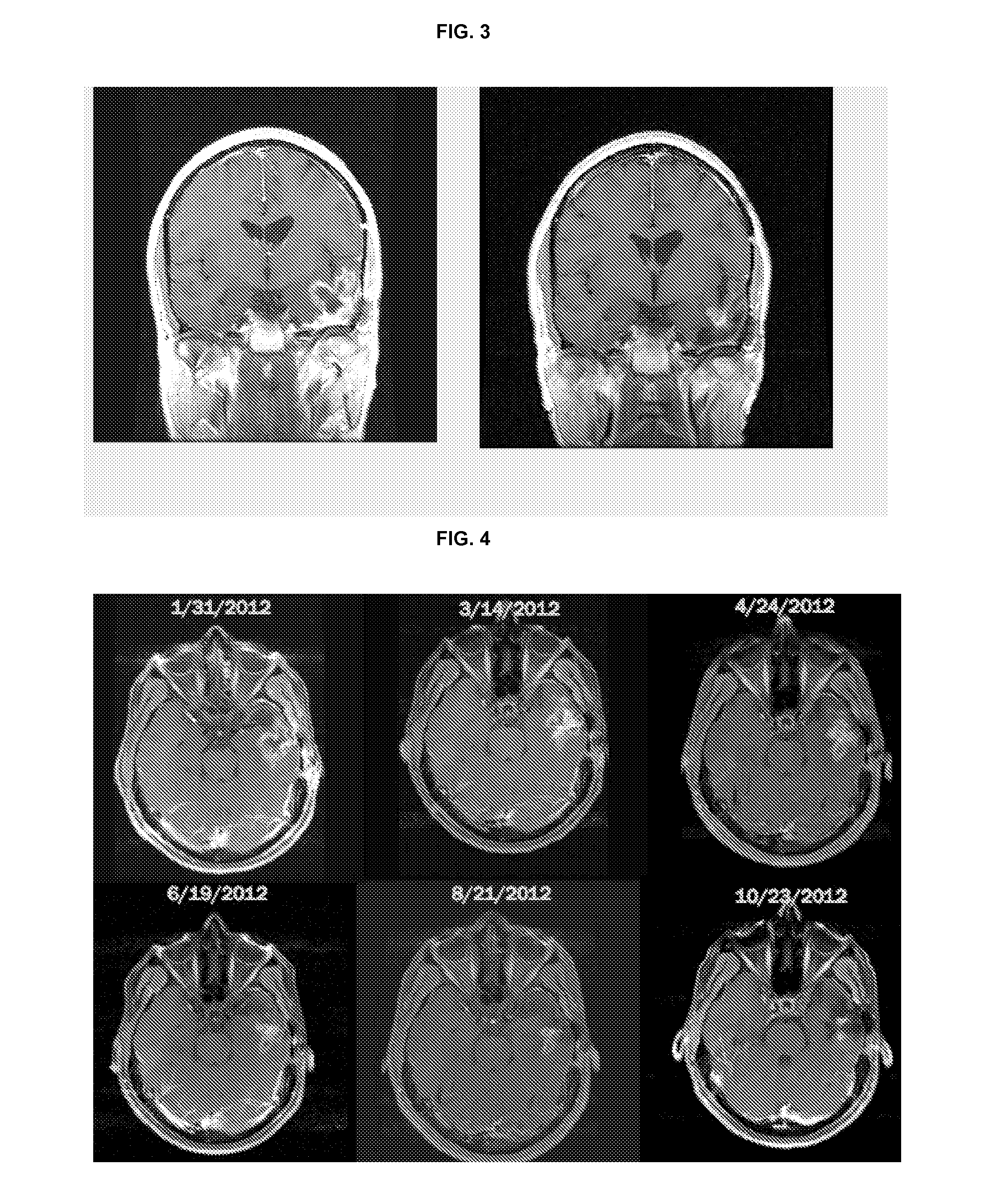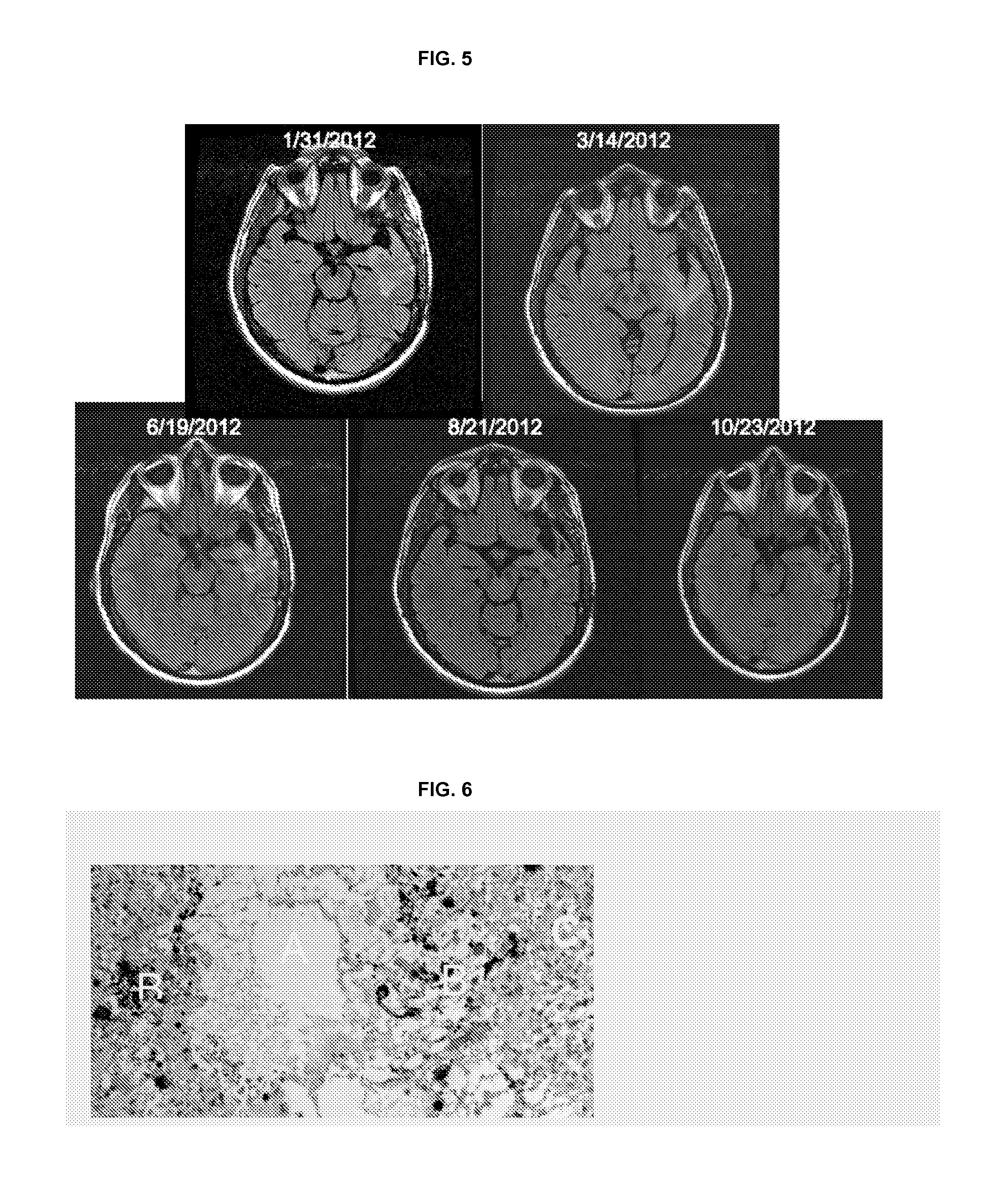Treatment of brain cancer with oncolytic adenovirus
a technology of oncolytic adenovirus and brain cancer, which is applied in the field of medicine and oncology, can solve the problems that the tumor treatment effect of human glioma tumors with existing adenovirus constructs cannot be significantly affected, and the cell's regulatory machinery for controlling growth is upset, so as to reduce the burden of tumors
- Summary
- Abstract
- Description
- Claims
- Application Information
AI Technical Summary
Benefits of technology
Problems solved by technology
Method used
Image
Examples
example 1
METHODS
[0123]A Phase 1, dose-escalating, two-part study of DNX-2401 for high-grade glioma was initiated under an investigator-sponsored IND at MD Anderson Cancer Center in Houston. Tex. To be eligible for the study, patients were required to have histologically-proven, recurrent high-grade malignant glioma. Group A of the study evaluated the direct intratumoral injection of a single dose of DNX-2401 into a growing area of biopsy-confirmed recurrent glioma, while Group B evaluated the injection of a divided dose of virus into the resection bed following glioma excision. The starting dose for both study groups was 107 (e.g., 1×107) viral particles (vp), with a plan to dose escalate in half-log increments up to 310 vp. The primary objectives of the study were to determine the safety, tolerability, feasibility, and biological effect of injecting DNX-2401 into human brain tumors in situ.
[0124]Patients in Group A received direct intratumoral injection through a needle and underwent standa...
example 2
Results
[0127]Study assessments for both treatment groups were performed at regular time intervals as outlined in the schedule of assessments. Data were recorded in electronic case report forms per MD Anderson standards and intra-institutionally monitored through MD Anderson's IND office approximately every 4 weeks. The data presented are unaudited and should be considered preliminary at this time.
[0128]Extent of Exposure. The maximum virus exposure for a patient in group A consisted of 3×1010 vp following intratumoral delivery (4 patients). A maximum dose of 6×108 vp was delivered to three patients in group B.
TABLE 1ExposureNumber PatientsTotal Dose (vp)CommentsGroup A (N = 25)Cohort 1-1 × 10731 × 107 IntratumoralCohort 2-3 × 10733 × 107IntratumoralCohort 3-1 × 10831 × 108IntratumoralCohort 4-3 × 10833 × 108IntratumoralCohort 5-1 × 10931 × 109IntratumoralCohort 6-3 × 10933 × 109IntratumoralCohort 7-1 × 10103 1 × 1010IntratumoralCohort 8-3 × 10104 3 × 1010IntratumoralGroup B (N = 12)...
PUM
| Property | Measurement | Unit |
|---|---|---|
| shrinkage | aaaaa | aaaaa |
| shrinkage | aaaaa | aaaaa |
| shrinkage | aaaaa | aaaaa |
Abstract
Description
Claims
Application Information
 Login to View More
Login to View More - R&D
- Intellectual Property
- Life Sciences
- Materials
- Tech Scout
- Unparalleled Data Quality
- Higher Quality Content
- 60% Fewer Hallucinations
Browse by: Latest US Patents, China's latest patents, Technical Efficacy Thesaurus, Application Domain, Technology Topic, Popular Technical Reports.
© 2025 PatSnap. All rights reserved.Legal|Privacy policy|Modern Slavery Act Transparency Statement|Sitemap|About US| Contact US: help@patsnap.com



